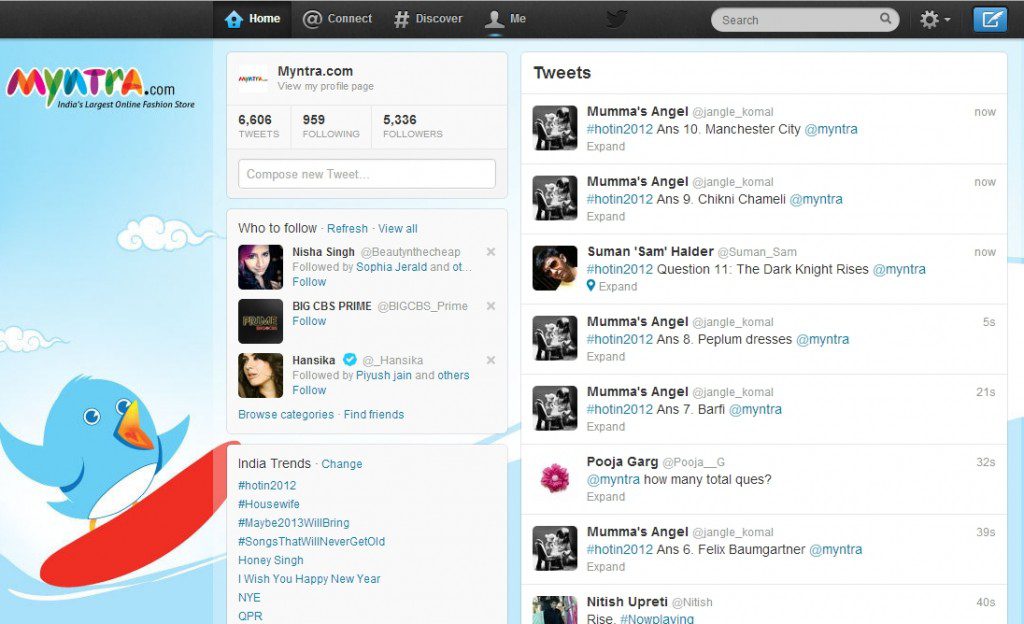A couple of weeks back, I’d written about the increasing broadcast tendencies on social platforms. Some events last week reminded me of something I’d tweeted a while back –
“let’s make it trend” is the new “let’s make a viral”
— manu prasad (@manuscrypts) May 11, 2012
It is, for better or worse, an item in the social marketer’s checklist. So unless it’s a day on which we’re outraging on multiple issues, you can easily see ‘branded’ trending topics. At Myntra.com, we’ve been playing with hashtags for quite a while now – #bachpanstyle was one such experiment. As we practiced more, the patterns started becoming more evident. Late last month, we started the #hotindecember hashtag in response to a business objective – creating more awareness about the similarly titled promotion at Myntra.com – and had constructed it around the promo TVC. It resulted in the hashtag trending on twitter. Just to check the lessons learned, we ran a #hotin2012 hashtag on 31st Dec, and ended the year as the #1 trending topic in India.
Considering that there was a much more serious issue taking up everyone’s attention, this should be surprising, but it’s not, and that’s what we have learned of Twitter’s trending algorithm.
That was about a brand using social as media. Like I mentioned earlier, the first hashtag was based on the TVC, something that had gotten us positive feedback on Twitter. After the Delhi incident however, the ad was considered by a few as ‘projecting women in poor light’. (worthwhile mentioning that Lisa Haydon, who starred in the TVC, had tweeted about the TVC being a lot of fun) Users, who also utilise social as media, are bound to have their opinions and will air them. The interesting part was that all this (hashtags and criticism) was happening in the same timeframe – 27-31st December.
Why do I find it interesting? Let’s take a step back. It was only when TV stations started competing with the rabbit population that we started contemplating the fragmentation of media as we then knew it. Add to that the increasing web (+mobile) penetration and things became more complicated as time progressed. Brands (in general) still haven’t figured how to handle this, so fragmentation within a social media channel and its impact is small fry, except this is probably an indication of the future.
This time, we chose not to react to the criticism – given the circumstances, it would have probably led to a nasty debate. Thankfully it died down. But what if a few twitter heavyweights had gotten into the act and made it trend for all the wrong reasons? We’d not have had the luxury. We’d have to refer to Crisis Management 101. In a worst-case scenario, we’d probably have to consider taking the TVC off air.
In essence, when an interactive medium is added to the mix, fragmentation takes on a completely different meaning. It no longer means isolated compartments which don’t talk to each other, the events on one affect another. As a media buyer, a brand can choose not to be present on some media, but when a channel talks back, the brand’s choices suddenly dwindle. I think this will manifest itself much more in 2013, the learning curve is going to be very steep!
until next time, user generated brand virals!
Disclaimer: The perspectives above are personal, and does not reflect the thoughts or actions of the organisation mentioned.

